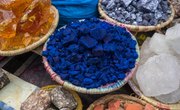Mexico is a country that is rich in culture and in history. The richness of its culture and the warmth of its people are reflected in the traditional Mexican clothing worn by natives. Saturated with luscious earth tones, such as reds, browns, yellows and greens, weavers infused intricate patterns and vibrant designs into their clothing. Although traditional Mexican clothing has undergone several periods of change, it has retained the beauty for which it is still admired.
Traditional Styles
Traditional styles of Mexican clothing included everyday wear and costume attire. Everyday clothing for women included a blouse and ankle- or knee-length skirt. It also included a sleeveless tunic called a huipil and a type of shawl, called a rebozo. Everyday menswear included a shirt, trousers, boots, sombrero and a large cape, called a sarape. Traditional Mexican costumes were adorned for special occasions and holidays. Costume dress included the puebla dress, quechquemitl and the charro suit.
Function
Traditional Mexican clothing was made not only for aesthetics but also for comfort, protection and functionality. The light and airy huipil kept the wearer cool and comfortable while the traditional sombrero hat shielded the wearer from sun exposure. Some garments could serve multiple purposes. Natives could either wear their rebozo or use it to carry a baby or other goods. The patterns on traditional Mexican clothing also served to announce the wearer's gender, community, ethnicity, class or marital status.
Influences
Traditional Mexican clothing can attribute many of its traits to foreign influence. When the Spanish conquered Mexico in 1521, they brought both political and cultural change. Post-colonial Mexican clothing emerged as a blend of native and European styles. Their influence was greatest on men's clothing, as the European style shirt, trousers and boots became staple everyday attire. European influence is partially responsible for what we now identify as traditional Mexican clothing.
Manufacturing Materials
Pre-colonial natives produced traditional Mexican clothing on a backstrap loom. The floor loom from Europe would later replace it. Pre-colonial natives primarily used cotton, bark and a native plant called agave to manufacture clothing. When the Europeans introduced sheep into the area, wool, along with silk, were eventually incorporated. To give garments their vibrant colors, natives originally used pigments from local plants. Eventually, aniline and acrylic dyes from Europe replaced traditional dyes.
Modern Clothing
Modern civilization may yet have an even greater impact on the future of traditional Mexican clothing than the European conquerors. While foreign influences merely brought aesthetic and manufacturing changes, modern fashion threatens to eradicate the craft altogether. Today, jeans and T-shirts have replaced huipils and quechquemitls in modern Mexico. However, many small-town residents still prefer traditional attire. Even in the larger cities, many modern Mexican citizens still incorporate traditional garments in their modern attire.
Related Articles
Writer Bio
Tamara Moffett is a freelance copywriter with a bachelor's degree in English and over seven years of experience. She specializes in writing persuasive sales copy, news stories and feature articles for magazines. Her work has appeared online and in the pages of publications like "Green Business Quarterly," "Black Ink Magazine" and the "Daily Journal of Commerce."









